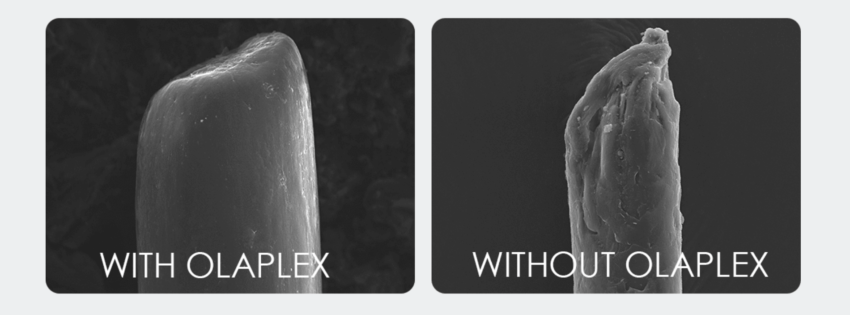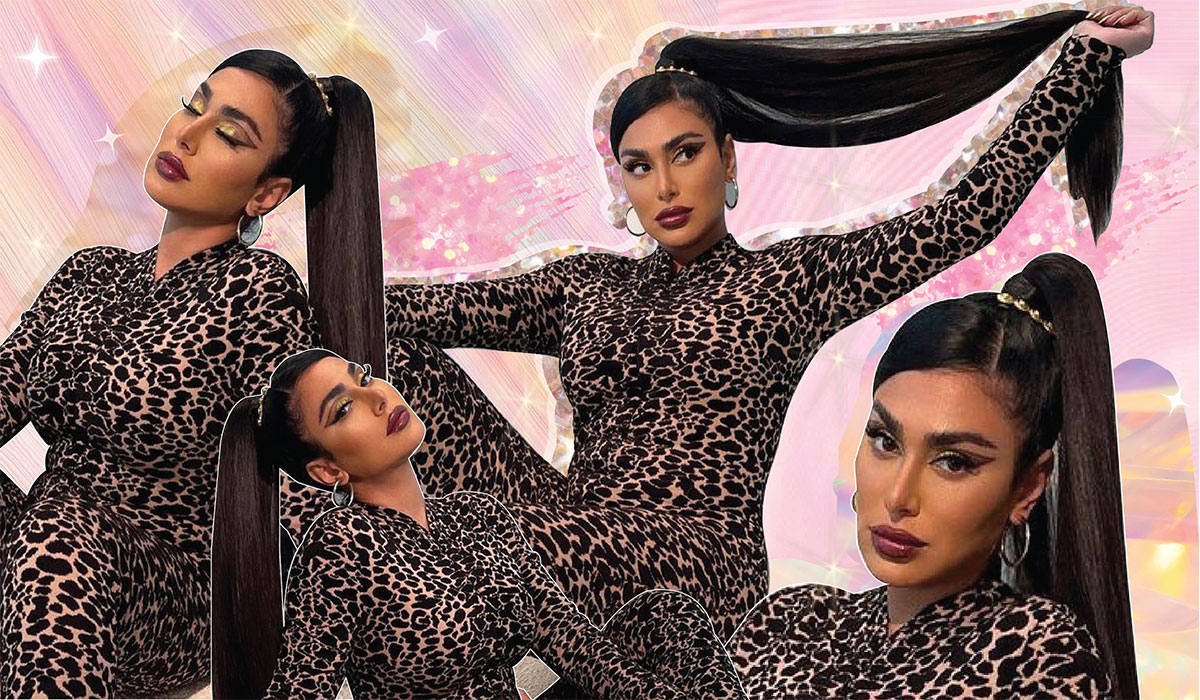What Is Olaplex And Does It Actually Make Your Hair Stronger?

Source: Olaplex
If you’ve ever done research on how to strengthen your hair – especially after a dye job – you might have come across the Olaplex treatment. Developed by world-famous chemists Dr. Eric Pressly and Dr. Craig Hawker, it’s a multi-step system that begins in your salon and is continued by you at home.
While it’s not necessarily a cure-all magic potion, it’s quickly become a standard in salons to keep hair strong, shiny, and healthy. For the professional explanation on what Olaplex is and how it works, we hit up some color experts.
So What is Olaplex, Exactly?
“Olaplex is used mainly in hair color services and uses a molecule specially formulated to repair broken disulphide bonds,” says Kim Le, a colorist at NYC’s Butterfly Studio Salon. FYI, disulphide bonds are responsible for elasticity and strength. Without them, hair becomes brittle. Le continues, “With the Olaplex in-salon system, as well as regular use of the after-care products, you see a major improvement in the feel, appearance, and strength of hair.”
At Butterfly Studio Salon, Le says they’ve also tested Olaplex on curly clients who have heat damage that causes disrupted curl patterns and brittle locks. She says, “After doing the in-salon treatment, curly-haired clients have noticed a return in shine, strength, and curl pattern.”

Source: Olaplex
In that sense, Olaplex is different from a conditioner because it’s actually rebuilding hair bonds at a molecular level. Conditioner, while still an important way to infuse hydration and restore shine, only treats the external layer.
“I actually used Olaplex for these last three years in each of my own bleaching treatments,” says Le, who has brightly colored hair that requires pre-bleaching for vibrant colors. “My personal experience is that my hair feels stronger after coloring than it normally would, and my hair doesn’t break off as much as it used to.”
Posts You'll Love:
How Do You Use Olaplex?
As mentioned, Olaplex is a multi-step system that begins in the salon. Your colorist will apply steps one and two, which contain the highest level of the patented molecule.
“Step one is added into the color or lightener to begin the process of preventing damage and repairing the hair as it is being colored,” explains Carly Militello, a colorist at Cutler Salon. “Step two is the second salon step that continues to restore any remaining bonds to ensure the hair is as healthy as possible after the color service.”
You continue the treatment process at home with the over-the-counter Olaplex Hair Perfector No.3, $28, which is used once or twice a week.
 Source: Olaplex
Source: Olaplex
“To get the full Olaplex experience, you can buy the No.4, $28, which is a shampoo, and No.5, $28, which is a conditioner, to treat the external layers of the hair,” says Linda de Zeeuw, a master stylist at the Rob Peetoom Salon. “Used together, these products give you the perfect balance between hydration and protein, which are the natural ingredients of our hair.”
While all the products are meant to be used together, you can technically do steps three, four, and five without one and two and still yield positive results. The in-salon steps are still very important when coloring your hair, though, because they prevent and correct color and heat-related damage.
Are There Bond-Building Alternatives?
While Olaplex remains the go-to bond-building product on the market, there are others out there. Each company uses their own technology, so you should expect the products to yield varying results. Some examples include the oil-based bond protector system, Brazilian Bond Builder, L’Oreal Professionnel’s SmartBond system, and Redken’s pH-Bonder system. Like Olaplex, these begin at the salon and inquire post-treatment “homework” completed by you!
Have questions on Olaplex? Let’s chat in the comments!























Leave a comment